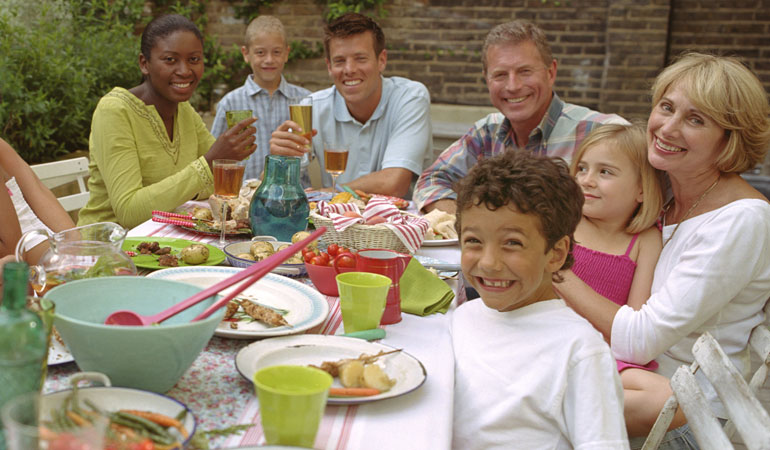Some of us are lucky enough to live close to our extended family, and our children have frequent contact with aunts, uncles, and cousins. Most of us, however, get to see certain family members only occasionally. If you’re planning to visit some of those far-flung relatives this holiday season or summer, there are several things you can do to make sure the trip goes well.
Preparing Your Child
Preschool children live in the moment. Weeks or months are forever to them, and they may not remember family members they met last summer, or on the last holiday.
These people, however fond you may be of them, will be strangers to your child, but there are several ways to “introduce” them before the reunion:
- Create a scrapbook. Include family photos from years ago, as well as recent shots, to help your child relate to the adults he’ll meet. Let your child look through the book whenever he wants, and carry it to the event, where it can be an ice-breaker.
- Share family lore. Tell stories about your own childhood experiences with these family members. Such tales help your child understand how these “strangers” fit into the family picture.
- Emphasize shared experiences and attachments, rather than bloodlines and genetic ties. You don’t want your child to approach the visit with the feeling that everyone, except him, is biologically related. Talk about relatives who entered the family through marriage or adoption, emphasizing that love and commitment bind them to the family.
- Reassure your child that she can spend time alone with you, if she wants to, during the family event.
Preparing Your Relatives
Extended family may not be as well informed about adoption as your immediate family or the friends and neighbors you see regularly. Several weeks before the visit:
- Take a family photo that clearly shows everyone’s face and projects a sense of intimacy and affection, through hugs and smiles. Send the photo with a message that says: “Our family can’t wait to see you again, and to have you get to know our son. We’ve told him so much about you!”
- Compose a letter summarizing recent family history, including the adoption. Describe how delighted you are to be an adoptive family and to have this child as your own. If there are other children in your family, emphasize the relationships between siblings. This letter can resemble those that families send out at year’s end to bring friends and relatives up to date.
Meeting the Family
Preschoolers can be shy around new people, and may not know what to say or how to behave. Here are ways to smooth introductions on the big day:
- Practice greeting new people — making eye contact, exchanging names, asking and answering questions. You might make it a game by having a tea party and pretending to be an unknown relative. Then switch roles and allow your child to play Aunt Gladys.
- Bring games or toys to the gathering that he can share with his cousins. Choose items that will appeal to both genders and a range of ages, like sidewalk chalk, jump ropes, crayons, and coloring books. Practice sharing and cooperating at home.
- Bake a favorite treat or snack, and put your child in charge of distributing it. Or assemble goody bags that your child can hand out to the other kids, as a gift from your family.
- Prepare your child to share his story. Help your child practice answering basic questions from curious cousins about where he is from and how he joined your family. Not all children will notice differences, or be aware of adoption, but, if your child’s appearance differs greatly from the rest of the family, it helps to be prepared.

